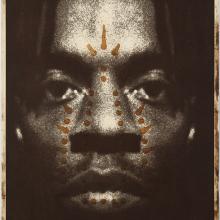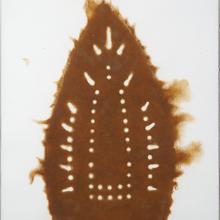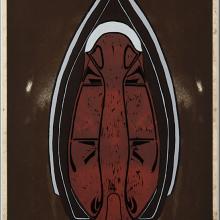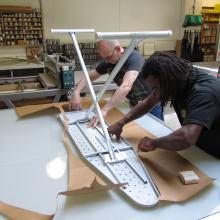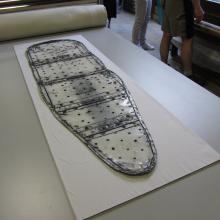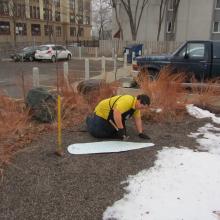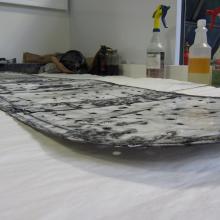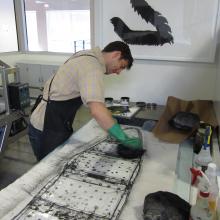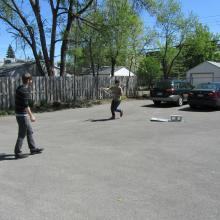2016 Common Work of Art
Willie Cole, Calpurnia, Bertha Mae, and Lula Bell
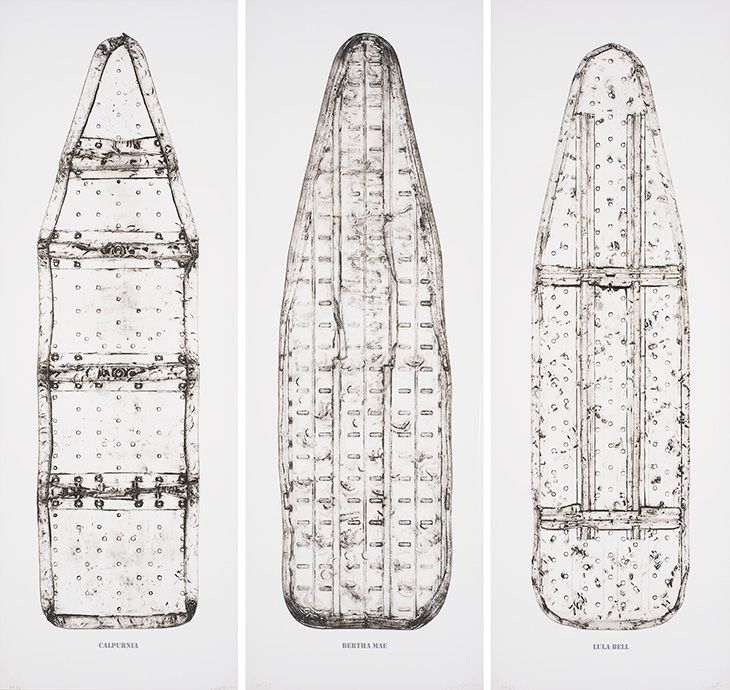
born Somerville, New Jersey
Calpurnia, Bertha Mae, and Lula Bell, 2012
from Beauties
intaglio and relief
Museum purchase: Peter T. Bohan Art Acquisition Fund, 2016.0031, 2016.0032, 2016.0033
In conjunction with KU’s selection of Between the World and Me by Ta-Nehisi Coates as its Common Book for the 2016–2017 academic year, the Spencer Museum of Art has selected a group of prints by Willie Cole as the accompanying Common Work of Art.
Willie Cole is perhaps best known for his assemblage sculptures composed of irons, women's shoes, and hair dryers, which he transforms into objects resembling West African sculpture. When discussing his process of altering everyday objects to reference African forms, Cole notes, “I think that when one culture is dominated by another culture, the energy or powers, or gods of the previous culture hide in vehicles in the new cultures.” This alchemy can also be seen in Cole’s Man, Spirit, and Mask, a 1999 triptych featuring the artist’s face and iron patterns. In 2012, Cole produced a series of prints with Highpoint Editions, including twenty-seven Beauties—delicate intaglio/relief prints of full-scale ironing boards.
The Beauties are printed from metal ironing boards Cole acquired from the Salvation Army and Craigslist. Cole and the printers at Highpoint flattened the boards by driving over them with cars, trucks, and skateboards, beating them with hammers, and finally running them through an etching press until they were 1/8 to 1/16 of an inch thick. The resulting prints are displayed vertically, their gouged and architectural surfaces resembling shrouded figures as well as diagrams of slave ships that were circulated by abolitionists in the 18th and 19th centuries. Each board is titled with an old-fashioned name, each a reference to Cole’s ancestors, family, or iconic slaves or domestics from literature, including Calpurnia from To Kill a Mockingbird.
Cole’s evocations of servitude and slavery through irons and ironing boards connect many aspects of his history and career. His great-grandmother, grandmother, and mother all worked as domestics, and his studio in Newark, New Jersey, was once a sweatshop. When asked if he projects associations with slavery onto these objects Cole countered: “I bring it out. The objects have a memory and history of their own. So if you have a slave, or just a domestic worker, people working for little money, their objects have a memory of that experience.” Although race is an issue Cole explores through his work, it is not the fundamental component of his artistic identity. Cole noted in 2013, “We should be artists until it’s important to say that we are black. I want people to see my art as art. America has this fascination with the other and wanting to label the other. They’ve categorized to control the world and the way we see the world and our symbols of beauty.”
You can view the KU Common Work of Art as part of the student-curated exhibition American Dream March 11–September 3, 2017.

